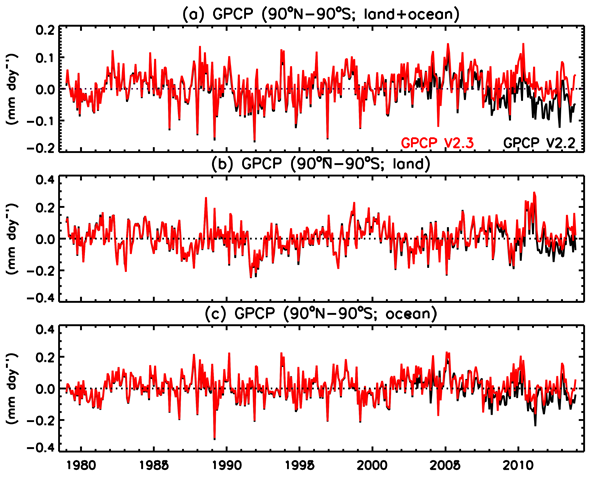Fast and influential factors have increased year by year!This journal is worthy of attention
Author:Scientific network Time:2022.08.04

01
Journal introduction

ATMOPHERE (IF 3.110, ISSN 2073-4433) was pioneered in 2010. Journal research content involves air-soluble, air quality, air quality, and its impact on human health, air pollution control, atmospheric technology, instrument and modeling research, creatures, creatures Meteorology, biosphere/water ring/land-atmosphere, climate, meteorology, planet atmosphere, and high-level atmosphere.
The ATMOPHERE Journal and Italian Aerosol Society (IAS) and the European Citizen Science Association Air Quality Working Group Open communication platform. ATMOSPHERE welcomes scholars with us to witness a more glorious future in the field of journals and atmospheric science!
2021 IMPactFactor
3.110
2021 citescore
3.7
Time to publication
15.8 Days
Time to First Decision
39 Days identify the left QR code,

Subscribe to the latest information of the ATMOSPHERE period journal.
02
Editor -in -chief introduction
Prof. Dr. Ilias Kavouras

New York City University of Public Health and Health Policy Graduate School
Professor of Environmental Health Sciences, Graduate School of Public Health and Health Policy, New York University. He has been trained by chemists and environmental health scientists. His research integrates natural science and health science to understand atmospheric dynamics, from the release of pollutants, the effects of their destiny, physical and chemical process in the atmosphere, to the way of exposure, and the biological mechanism of their toxicity and clinical results Relationship. His interaction with climate change and atmospheric physics and chemistry processes, and the environmental and health impact that has been produced is particularly interested. Professor Ilias Kavouras has always belonged to research and academic institutions in the United States and abroad. It is committed to the above -mentioned macro themes to solve local and regional priorities, while considering its diversity and unique characteristics. His experimental research design includes desktop laboratory analysis and in vitro drug science, method development, field research, community -based exposure and health research, as well as comprehensive geographical space, reverse and epidemiological modeling.
03
Deputy Editorial introduction
Prof. Dr. Xuejun LiU

China Agricultural University
Professor and doctoral supervisor of the School of Resources and Environment of China University of Agricultural University, member of the Nutrition Circle and Environmental Professional Committee of Chinese Plant Nutrition and Fertilizer, Member of the Nitrogen Working Committee of the China Soil Society, member of the Professional Committee of Agricultural Resources Utilization of the China Natural Resources Society, and atmospheric atmosphere of the Ministry of Environmental Protection Members of the cause of severe pollution and the overall expert group of public relations projects, the chief expert of the National Research Office of the National Air Pollution Prevention Public Relations Center, is the judges or editorial boards of many academic journals such as EST, AE, and Ecological Journal. He has long been engaged in research work in the aspects of nitrogen circulation, environmental nutrients, and soil acidification of farmland, and has formed distinctive characteristics in terms of atmospheric nitrogen settlement and nitrogen environmental effects. More than 300 scientific papers have been published, published 180 SCI papers in international journals, 1 English monograph in publishing, and 14 participation in publishing monographs. In 2006, he was selected into the Ministry of Education's New Century Excellent Talent Support Program, won the Outstanding Tutor Award of the Chinese Academy of Sciences in 2012, and became the chief scientist of the National 973 Project in 2013. In 2014, he was funded by the National Outstanding Youth Fund. Talent plan, selected for the national "10,000 Plan" in 2016, young and young scientific and technological innovation leaders, 2017 selected "Science Chinese" (2016) character, and in 2021 "Ais Weimer 2020 China High Scholars" and "Cited Scholars" and " 2020 top 2% of top scientists "list.
04
Editorial introduction
Dr. Daniele Contini
The Institute of Atmospheric Science and Climate of the National Research Commission of Italy
Research Director of the Institute of Atmospheric Science and Climate Research Institute of Ledar, Italy. The main research interests are concentrated in four main aspects: (1) using high -resolution time measurement and receptor model identification and representation of the source of the atmospheric granules based on granular chemical composition; Impact (study atmospheric particles dynamics in the surface boundary layer, pay special attention to the analysis and parameterization of air pollutant diffusion, and physical modeling that uses the proportional ratio in wind tunnels or hydraulic veins). Since 2018, he has served as the chairman of the Italian Gas Soluble Association (IAS) and the co -chair of the work group of the "Atmospheric Solk oscillating Research" working group of the European Gas Soluble Conference. He manages the Ledar Environment-Climate Observation Station, GAW/WMO-Global Atmospheric Surveillance Network Regional Station and Actris Network Station.
05
Gao Yin article recommendation reading
The Global Precipity Climatology Project (GPCP) Monthly Analysis (New Version 2.3) and A Review of 2017 Global Precipity
Global Precipitation Climate Project (GPCP) monthly analysis (new version 2.3) and 2017 global precipitation review
Robert F. Adlert Al.
https://www.mdpi.com/2073-4433/9/4/138
The new version of the global precipitation climate project (GPCP) monthly analysis describes the changes made to improve the homogeneity of products, especially after 2002. These changes include cross -calibration and update analysis of satellite data input. The overall precipitation after 2009 increased by 1.8%since 2009. Update the analysis of quantitative regulations into the final high -quality version, which increased the total global land after 2002 by 1.8%. These changes correct that the global precipitation in the past decade estimated by the early version 2.2 has decreased slightly. GPCP analysis is also used to describe global precipitation in 2017. This article records the average La Nina model in 2017 and describes the evolution of the El Nino model in early 2016. The total global rainfall in 2017 was one of the highest values from 1979 to 2017, second only to 2016 and 1998 (both El Nino), and strengthened a slightly positive trend. The results of 2017 also strengthened the significant trend of precipitation intensity (monthly) in tropical areas. This study indicates that GPCP analysis is of great value for climate monitoring. Identify the left two -dimensional code,

Read the original text.

Evaluating the Hydrology Cycle Over Land user-Corrent Precipital Climtology from the Global Precipital Center (GPCC)
Use the newly revised precipitation climate evaluation of the Global Precipitation Climate Center (GPCC)
Udo SchneidRet Al.
https://www.mdpi.com/2073-4433/8/3/52
In 2015, the climate average of about 75,100 rainometers was released based on the 1951 ~ 2000 rainfall climate released by the Global Precipitation Climate Center (GPCC) in 2015, allowing the average surface precipitation to be part of the global water cycle. In the 2011 version of GPCC, batch climate correction is applied to compensate for insufficient measurement. In this article, we derived a improvement method based on the weather report from 1982 to 2015. The comparison results show that climatic methods tend to overestimate the correction of Central and Eastern Europe, especially in the northern winter and other regions of the year. Based on the average weather, the precipitation climate science that was not corrected from GPCC from 1951 ~ 2000 concluded that the annual precipitation was 854.7 mm (excluding Antarctica) or the global land surface 790 mm. It is expected that the temperature of the world (land and ocean) will increase by 2%to 3%compared to the increase in temperature before industrialization. However, from 1931 to 1960 to 1981 to 2010, the climate comparison of climate science showed a significant trend of surface precipitation. This may be caused by the huge changes in precipitation, the data coverage of time change over time, and other problems related to the sampling of the rainometer meter network. GPCC continues to expand and further improve the quality of its database, and will generate precipitation analysis with homogeneous data over time over time. Another way to reduce sampling problems is to combine the analysis of rainfall -based meter with remote sensing (ie satellite or radar) dataset.
Identify the left two -dimensional code,

Read the original text.

06
Special issue recommendation
Artificial Intelligence for MeteorologyApplications
Edited bywei fang, Victor S. Shengand Qiguang Wang
Submission deadline15 SEPTEMBER 2022

- END -
Wannian County Meteorological Observatory lifted lightning yellow warning [III level/heavier]
Wannian County Meteorological Station June 10, 2022 at 05:25 at 05:00
Zhaoqing seal: 50 calligraphy angels in ancient capital in Lingnan watched the future

Wen, Figure/Yangcheng Evening News all -media reporter Yang Zairui correspondent H...